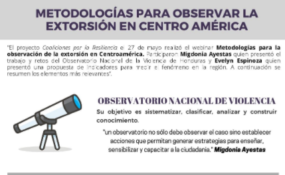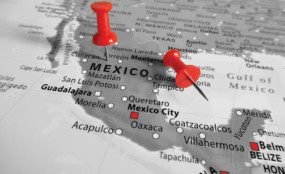Posted on 17 Jun 2014
Also in English, below.
Además del secuestro y del secuestro virtual, el secuestro cibernético es otra forma de crimen que va en aumento en América Latina.
¿Cómo funciona? Los criminales se hacen pasar por alguna institución oficial que exige el pago de una multa (entre 100 y 500 dólares) a cambio de desbloquear una computadora que supuestamente habría sido bloqueada a causa de una investigación.
Según un reporte publicado este mes por la Organización de Estados Americanos, la OEA, y la empresa de software de seguridad Symantec, el secuestro cibernético se detectó por primera vez en 2012. En el año 2013 se registró un aumento de su incidencia del 500 por ciento en todo el mundo, efecto que se dejó sentir en Latinoamérica.
Los ataques de ransomware han ido evolucionando con el tiempo y ahora los criminales se aprovechan de las tecnologías para pagos en línea para cobrar sus falsas recompensas. En América Latina el aumento de este crimen en 2013, llevó a las policías de México y Argentina a emitir alertas para prevenir a los usuarios de la red. La región de América Latina y el Caribe cuenta con la población de usuarios de Internet de más rápido crecimiento en el mundo, con un aumento del 12 por ciento durante el último año. Sin embargo, a la par de esta expansión se ha incrementado la actividad ilícita y el nivel de sofisticación de los métodos y herramientas que usan los cibercriminales.
El informe sobre las Tendencias de Seguridad Informática en América Latina y el Caribe de la OEA y Symantec, presenta un panorama de las tendencias y desafíos en ciberseguridad. El análisis fue hecho con la participación de AMERIPOL, Microsoft, el Registro de Direcciones de Internet para América Latina y Caribe (LACNIC), la Corporación para la Asignación de Nombres y Números en Internet (ICANN) y el Grupo de Trabajo Antiphishing (APWG).
El reporte subraya las acciones emprendidas por los gobiernos latinoamericanos y otras iniciativas regionales. También se señala la disparidad en cuestión de desarrollo de la seguridad cibernética entre los diferentes países. A la vez se destaca el que en 2013 Guyana, Jamaica, Trinidad y Tobago y Barbados hayan establecidos mecanismos para dar respuesta al crímen cibernético. El informe recalca que el aumento de ciberdelitos en America Latina y el Caribe es un problema real que requiere la atención inmediata de los gobiernos.
Los delitos más comunes contra individuos son relacionados al phishing, seguido de robo de la identidad para cometer fraudes financieros o a través de las redes sociales. También han aumentado significativamente los delitos contra los bancos, ocasionando millonarias pérdidas que se estiman aún más grandes de lo que se reporta. En contraste, se identifica una disminición del vandalismo a sitios web y del “hacktivismo”, lo cual puede reflejar las acciones de control implementadas por los gobiernos, a raíz de incidents anteriores.
Además de mostrar el diagnóstico de la seguridad cibernética en cada país de America Latina, el reporte destaca el rol de las tecnologías de la información y la comunicación en el aumento de los delitos tradicionales. “La pornografía infantil y otras formas de explotación de niños y menores de edad sigue siendo la más vasta de las áreas de actividad delictiva en la web, a pesar de la enorme cantidad de iniciativas nacionales e internacionales orientadas a impedirla. El tráfico de armas y drogas y la trata de personas también resultan facilitados por las TIC e Internet.”
El informe Tendencias de Seguridad Informática en América Latina y el Caribe fue presentado en el marco de la XLIV Asamblea General de la OEA celebrada en Asunción de Junio de 2014.
Para leer el reporte completo: http://www.symantec.com/content/es/mx/enterprise/other_resources/b-cyber-security-trends-report-lamc.pdf
Más información sobre cibercrimen: https://globalinitiative.net/programs/cybercrime/
______________________________________________________________
Trends in Cyber-Security in Latin America and the Caribbean
Beyond kidnapping and virtual kidnapping, cyber kidnapping is another type of crime that has been rising steadily in Latin America.
How does it work? Criminals claim to be representing an official institution and request the payment of a fine (between $100-500) to unblock a computer that has supposedly been blocked due to an investigation.
According to a report published this month by the Organization of American States (OAS) and the software security company Symantec, cyber kidnapping was first detected in 2012. The practice has since increase a startling 500% in global incidences by 2013, with a commensurate rise in Latin America.
Internet user rate in Latin America and the Caribbean is the fastest-growing in the world, with a 12% increase during the past year alone. Illicit activity and technology sophistication used by these cyber criminals have been rising in parallel. Ransomware attacks have been evolving and emerging technology for online payment has facilitated criminal practices. In Latin America, the increase of this crime in 2013 led Mexican and Argentinian police forces to issue alerts intended to warn Internet users of the situation.
The most frequent forms of crime against individuals are phishing and identity theft, with the objective of committing financial fraud or for use in social networks. Bank fraud has also increased significantly, which has generated multi-million dollar losses, in excess of what is reported.
Besides diagnosing cyber security concerns in each Latin American country, the report points out the role of information and communication technologies in the increase of traditional crimes. “Child pornography and children exploitation is still the biggest delinquency activity on the Internet in spite of the numerous national and international initiatives that have been taken to prevent this form of crime. Arms, drugs and human trafficking have also been facilitated by the information and communication technologies and by the Internet.”
By contrast, a decrease in cyber vandalism and hacking has been observed, which may be the result of the control actions taken by governments, which speaks positively to the potential for effective responses to be implemented.
The OAS and Symantec report, written in collaboration with AMERIPOL, Microsoft, The Latin American and Caribbean Internet Address Registry (LACNIC), Internet Corporation for Assigned Names and Numbers (ICANN) and the Anti-Phishing Work Group, on Cyber Security Trends in Latin America and the Caribbean (not available in English) highlights the challenges to achieving cyber security. The report underlines the different actions and initiatives taken by Latin American Governments and presents the disparities in terms of cyber security development among all these countries. In addition, the report highlights the fact that in 2013 Guyana, Jamaica, Trinidad and Tobago and Barbados have all set courses of action intended to address cybercrime, but that this is a problem that requires immediate attention by all governments in the region.
The report on Cyber Security Trends in Latin America and the Caribbean was presented during the XLIV OAS General Assembly held in Asunción in June 2014.



